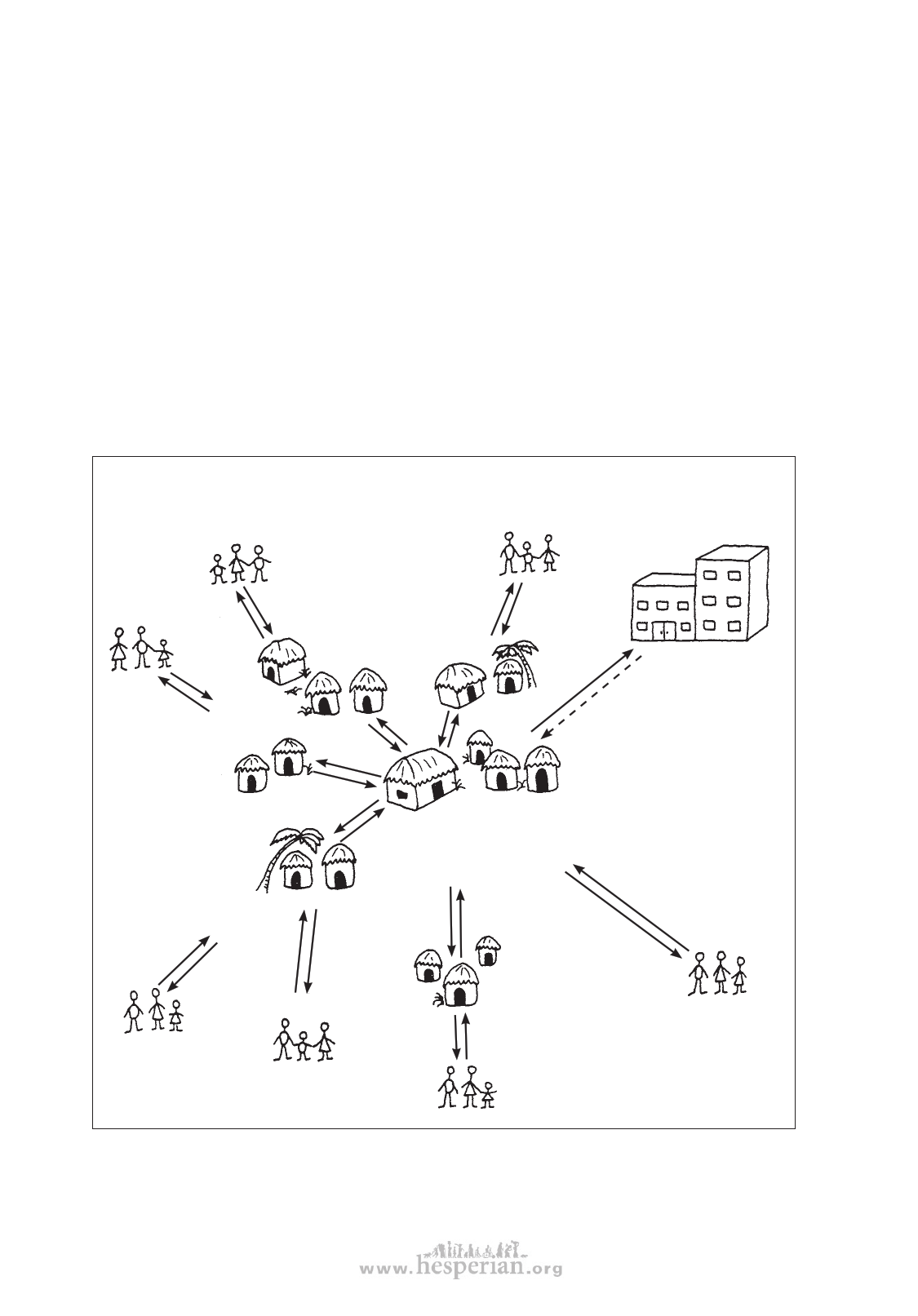
410 chapter 45
A good arrangement, perhaps, is a referral chain, starting with rehabilitation in the
home with guidance from a small community center run by local, modestly trained
workers. If possible, the center has close links with the nearest low-cost or free
orthopedic hospital and professionally-run rehabilitation center, to which the relatively
few children with disabilities requiring surgery or complex therapy can be referred.
Outside professionals (orthotists, therapists, and others) can help by making periodic
teaching visits to village rehabilitation centers. They can also invite village workers to
visit and apprentice with them in their city shops and clinics. (Apprentice means to
learn by helping someone more skilled.)
Some villages will be too small or lack the resources to start their own community
rehabilitation center. However, it has been found in several countries that once a
modest center in one village opens, the word spreads. Disabled children with family
members soon begin arriving from surrounding villages. In time the rehabilitation
team may be able to help disabled persons and their families in neighboring villages to
organize their own sub-centers. Disabled workers from these sub-centers can learn by
‘apprenticing’ at the original center.
OUTREACH AND SUPPORT SYSTEM FOR A VILLAGE REHABILITATION CENTER
home and family-based
rehabilitation
{sub-centers
or family-
organized
activities in
neighboring
villages
urban orthopedic
hospital or
referral center
VILLAGE REHABILITATION CENTER
in a centrally located village
or small town
outsiders, such as advisors,
therapists, and orthotists,
who make short-term visits to
teach—or who receive village
workers as apprentices for
specific training
The above ‘ideal’ is more or less the way Project PROJIMO in Mexico works,
although with certain difficulties and obstacles.
Disabled village Children